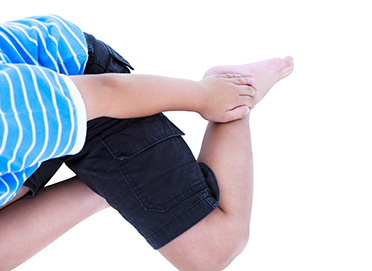Sever’s disease is a common cause of heel pain in adolescence. Developing, physically active “kids” are often more prone to this condition. During puberty the calcaneus consists of two developing sites of bone, known as ossification centres. These two areas are separated by an area of cartilage, known as the calcaneal apophysis.
The Achilles tendon attaches the triceps surae (calf muscles) to the calcaneus (heel bone). As a child grows the calcaneus grows faster than the surrounding soft tissue, which means the Achilles tendon can be pulled uncomfortably tight. This increase in strain causes inflammation and irritation of the calcaneal apophysis (growth plate) which is known as Sever’s Disease. The pain is exacerbated by physical activities, especially ones involving running or jumping. Sever’s disease most commonly affects boys aged 12 to 14 years and girls aged 10 to 12 years, which corresponds with the early growth spurts of puberty.
Symptoms
- Unilateral or bilateral heel pain
- Heel pain during physical exercise, especially activities that require running or jumping or are high impact.
- Pain is often worse after exercise.
- A tender swelling or bulge on the heel that is painful on touch.
- Limping.
- Calf muscle stiffness first thing in the morning.
Treatment May Include
- Strengthening exercises.
- Exercise and training modification.
- Orthotic therapy.
- Ice terapy.
- Footwear changes (no thongs should be worn).
- Extreme cases may need casting or specialized night splints which will be determined by the podiatrist.


